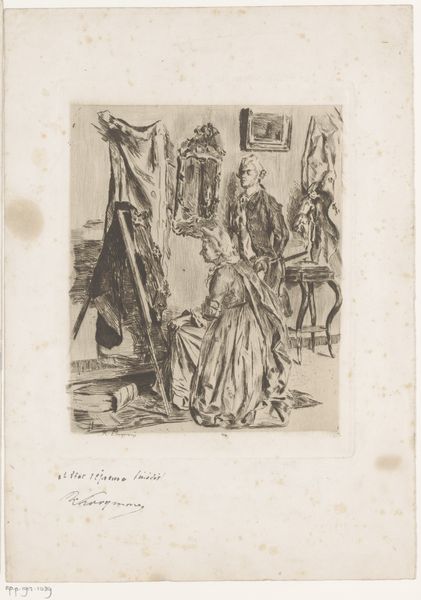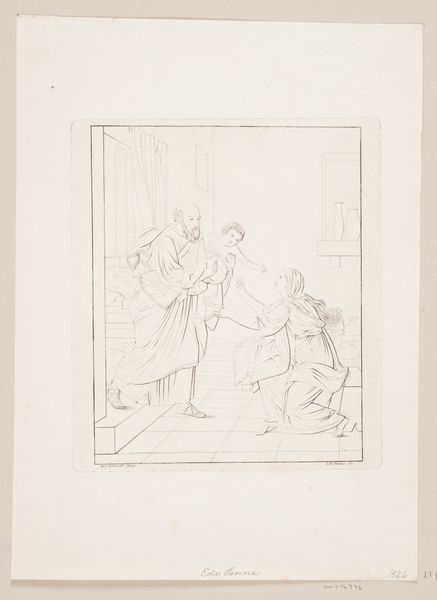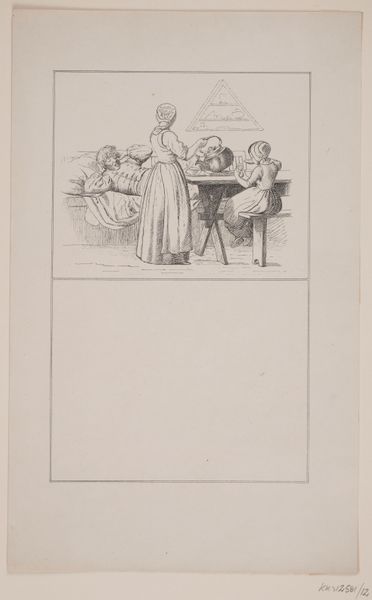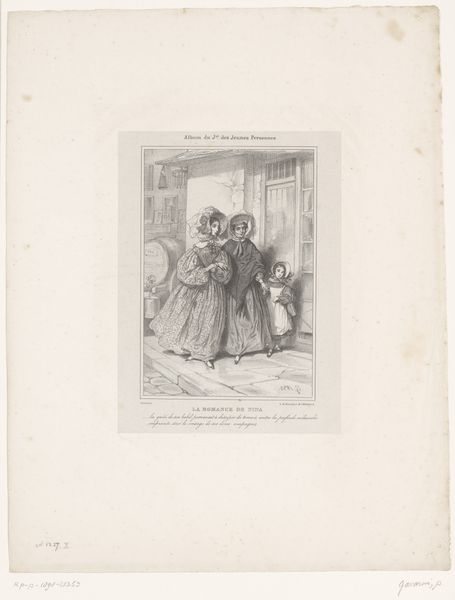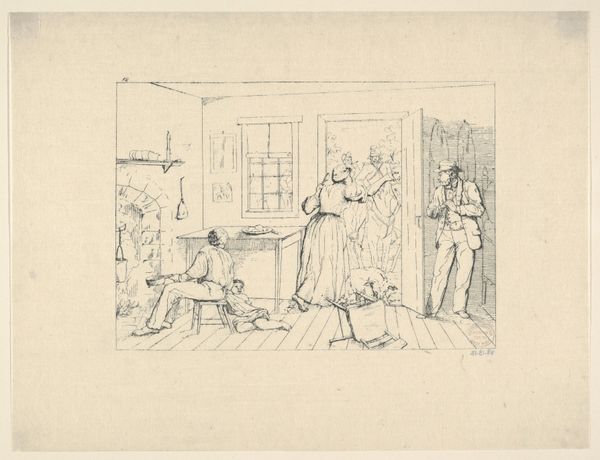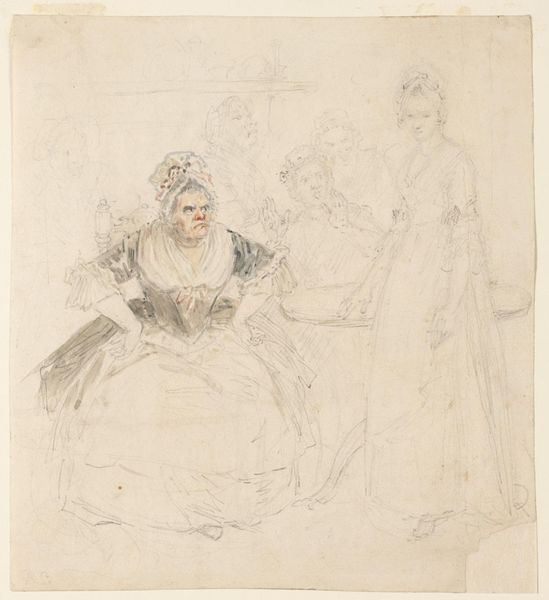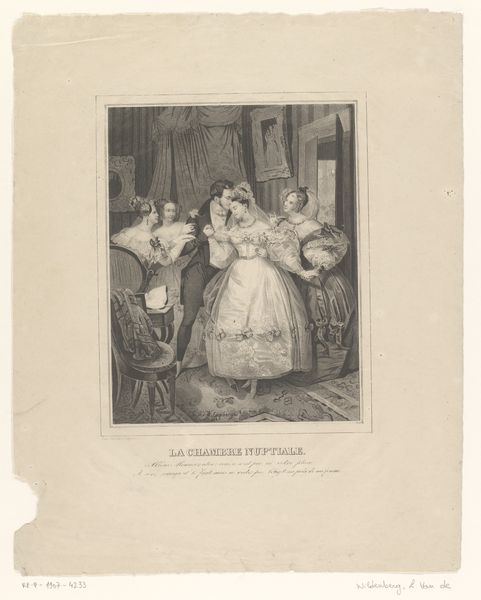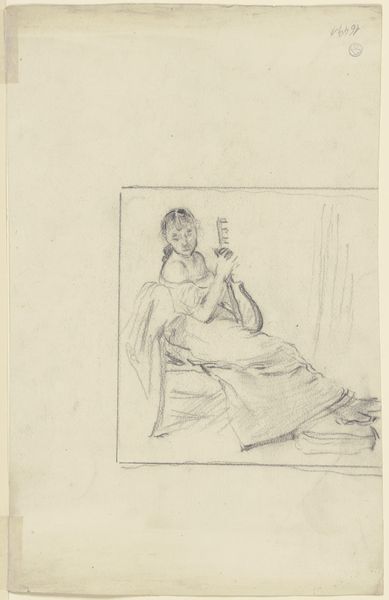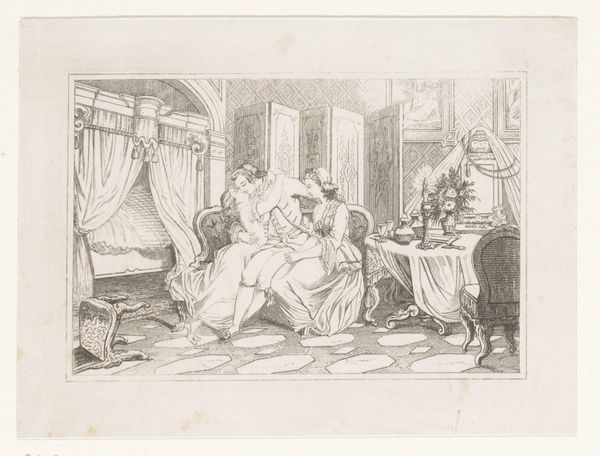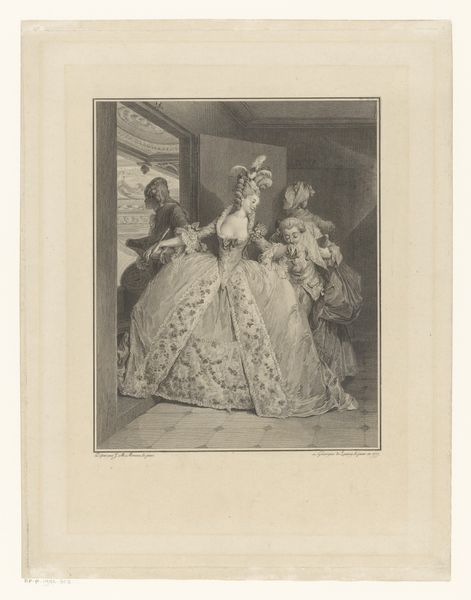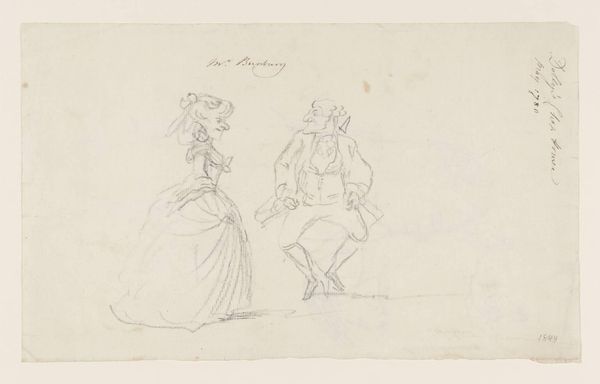
Dimensions: height 245 mm, width 163 mm
Copyright: Rijks Museum: Open Domain
Editor: Herman Frederik Carel ten Kate's "Two Women Embracing" from around 1832-1891, rendered in pencil on paper, has an almost stage-like quality. It feels very intimate, despite being in a populated room. What stands out to you in this sketch? Curator: The means of production, namely the quick, inexpensive pencil sketch, hints at a broader democratization of image-making during this period. This wasn't high art commissioned for a wealthy patron; it feels much more like a study of everyday life, reflecting a shift towards genre-painting in Dutch art. Notice how the artist used shading to denote the varying material quality of the women's dresses and their relationship. Do you think the figures in the background, in contrast, share the same degree of meticulous labour? Editor: I hadn't considered the difference in labor! It's interesting how that impacts our reading of the primary figures as distinct from the background. They feel far more *present* than the men who watch, especially because they don't look directly back. Curator: Exactly. Consider, too, the symbolism inherent in depicting domestic life so candidly. Whose stories were valued enough to be represented, and whose were relegated to the periphery of visual culture? Ten Kate makes no attempt to romanticize the subjects, does he? It begs the question, what's the function of this very ordinary scene as an etching? Editor: Right. This is far from an idealized portrayal of women. Maybe this drawing, as a more accessible form, could bring everyday experiences into wider circulation, challenging some conventions of "high art". Curator: Precisely. And what stories about consumption, production, and class were thus popularized, as new means to create etchings became widely available, are some open questions we can consider here. Editor: That's a perspective shift for me. I appreciate how considering the *how* and *why* of its creation helps unveil the sketch's significance. Curator: Likewise, noticing how accessible production affects accessibility of its subjects opens fresh interpretive space for the study of social structures in visual imagery.
Comments
No comments
Be the first to comment and join the conversation on the ultimate creative platform.

